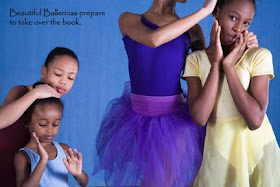I recently participated at a media specialist conference in Florida, where I heard a number of interesting presentations by our fiction writing colleagues. Gayle Forman when she writes she hears the voices of her characters. We nonfiction authors do that, too, of course, but there’s an additional step. First, we must search out real characters, alive or dead, and then find ways to integrate them into our heads. At least that’s my process. Nonfiction writers’ search for characters is indeed a long, twisty road.
This subject led me to the master of all character searches, Luigi Pirandello, who I assume reads INK somewhere in the Italian grand beyond.

I ask him: Caro Senore Pirandello. Per favore. Your Six Characters in Search of an Author is great theater, but how about some help for us nonfiction writers? After all, we share much in common. Just as your characters take control of your play, people represented in nonfiction literature usually take control of the books right from the start. Primary sources are our bread and butter. For this writer, my primary sources, my people, ARE the book.
The way I work is somewhat logical and somewhat not. Before I meet anyone, I need to understand my subject – just enough to be able to ask decent questions – but not so much as to enable preconceived ideas to drive the book. That’s the characters’ domain. Meanwhile the networking in search of said characters begins.
To network, timidity has no place in the lexicon of nonfiction. We must be tough, just like your pushy six characters, Senore. I’ll call anyone I know who might know someone who might know someone. Emails go out to suggested organizations, and to the friends of friends of friends. Fingers crossed, I await the responses. In the best of all worlds, doors fly open, private intimate materials are gingerly handed over, and the most fascinating, introspective, articulate people whoever walked the planet start talking. Oh-oh, now I’m verging into fiction. Truth-be-told, this doesn’t happen quite so quickly, but hey, this is a blog, and our readers are busy people.
While the hopefully discovered most fascinating person talks, I tape, listen, and watch. Does she lean to the left? To the right? Does his upper lip curl when revealing an inner truth? Is she a blinker? When does he laugh nervously? Also: Am I pushing too hard? Not enough? Asking the right follow ups? This is a balancing act whose high wire is based on trust. It’s extraordinarily exhilarating – when it works.
Up to this point, the interviewees are people, not characters who will take over the book. To become characters, they have to go through me. First, all the tapes, every last word, need to be personally transcribed. While pushing rewind, again and again, their voices slowly begin to creep into my being. Suddenly, their speech patterns become my speech patterns, their body language and movement slowly becomes mine. They attach themselves to my bones and seep into my blood. I literally need to know how it feels to be ze [him or her]. I know, I know, this is more than a little weird, but the creative process is usually weird. [Just watch the anomalous routines baseball players go through at bat.]
 Aside:
Aside:It’s not just the nonfiction writers who do this. Fiction writers have their own mishegas. [Yiddish for the above paragraph.] Before my friend, Elizabeth Levy, wrote Tackling Dad, she needed to feel football. So she went out and bought her own gear and hired a professional football player to teach her how to feel the sport. "Tackle me but don't kill me, please," she told him.
Aside over:
By now, I’m so totally in love with my characters. Friends and loved ones say I need to step back. “Remember,” my husband often admonished while I was writing No Choirboy: Murder, Violence, and Teenagers on Death Row, “he was convicted of murder.” But we writers need to understand the good in the bad, and the bad in the good, to reveal the full panoply of the human condition.
We search for our characters … and fall in love.

Great post, Susan! I go through the same process of having my characters/subjects crawl under my skin, and now you've given me the word for it: mishegas.
ReplyDeleteA fine essay, Ms. S. Your last line called to mind a sign that used to hang on the wall of my mom's kitchen:
ReplyDelete"There's so much good in the worst of us, so much bad in the best of us, that it little behooves any of us to compare ourselves with the rest of us."
Isn't that a great word, 'behooves' ? don't you love the English language?
Thanks Marfe and Cheryl for your comments. It's good to know others share my mishegas. [Lagtely, I've been having fun using Yiddish expressions. Go figure.] And yes, yes, yes "behooves" is a wonderful word. Here's a thought: we all use "behooves" somewhere, somhow in our next book. :)
ReplyDeleteI've just discovered your blog after it was mentioned in the SCBWI newsletter--and I'm loving it! I am embarking on my first non-fiction picture book biography. It's comforting to see the stages laid out by someone else who has done this before. Thanks for the fun and thoughtful post.
ReplyDelete